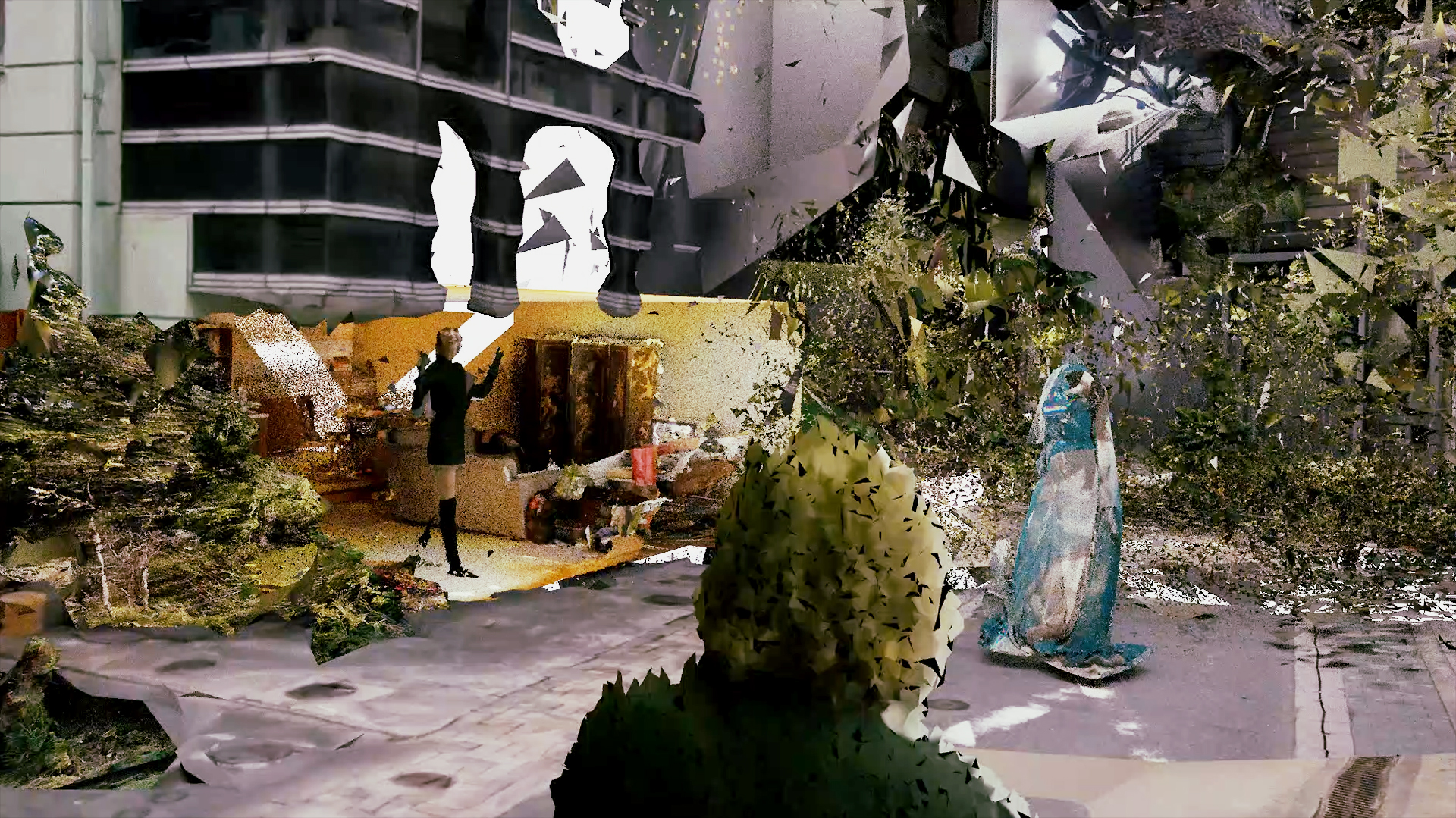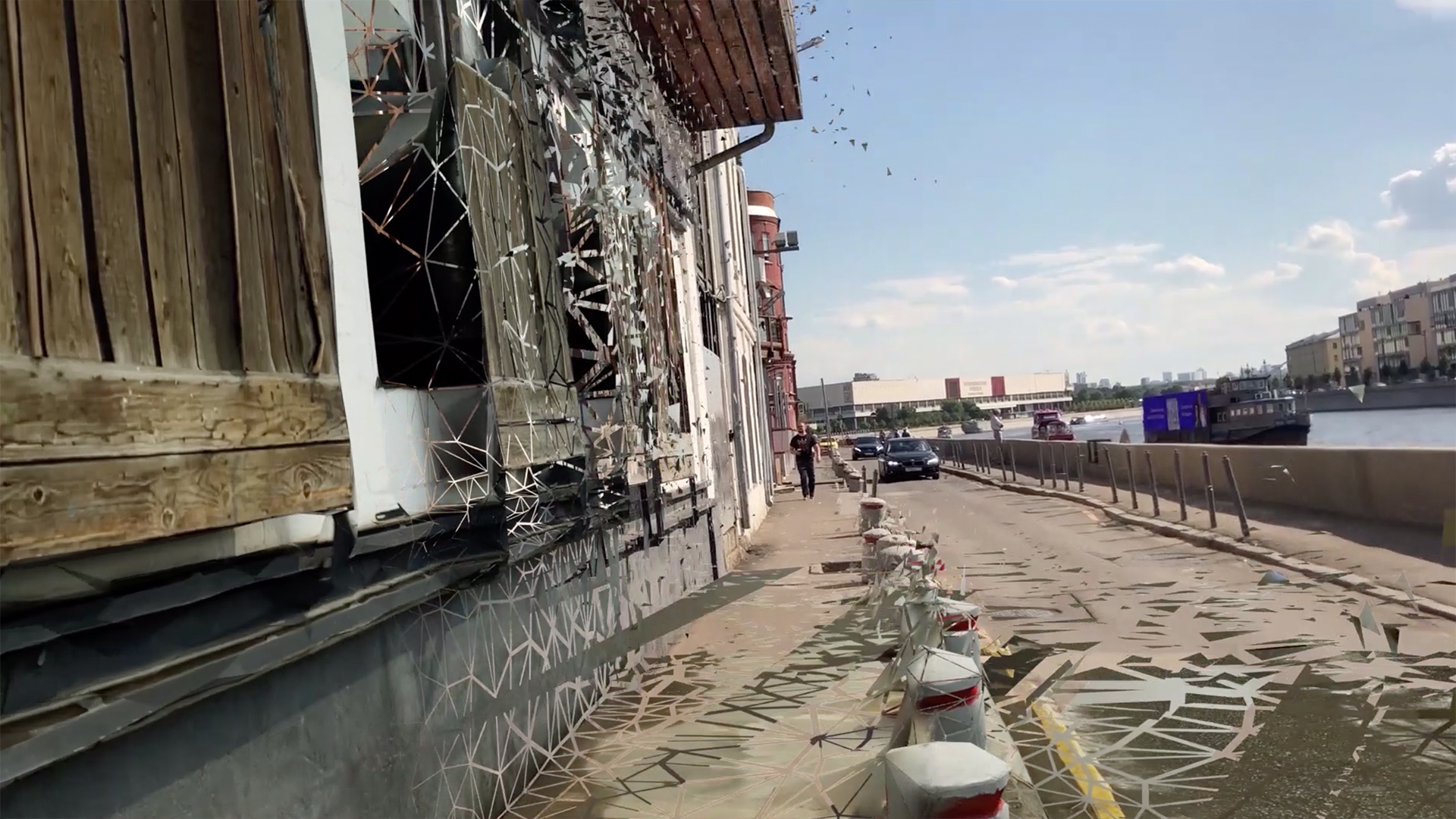
Current
Provides Ng
Eli Joteva
Ya Nzi
Artem Konevskikh
Strelka Institute of Media, Architecture and Design, RU
Video 11'25"
Keywords: Current, Infinite Live Stream, Volumetric Cinema, AI Deepfakes, Personalised Narrative.
"Current" is a speculation on the future of broadcasting cinema. It emerges from the intersection of contemporary trends in livestream culture, volumetric cinema, AI deep fakes and personalized narratives. The film "Current" is an experiential example of what this cinema might look and feel like within a few years based on the convergence of these trends. Artificial intelligence increasingly molds the clay of the cinematic image, optimizing its vocabulary to project information in a more dynamic space, embedding data in visuals, and directing a new way of seeing: from planar to global, flat to volumetric, personal to planetary.
The outsourcing of imagination to AI can most readily be observed in the cultural phenomena of deep fakes and deep dreams. Generative Adversarial Networks (GANs) and Autoencoders was used to simulate visuals that are uncanny to the mind. These neural networks allow the compositing of multiple visual data inputs, generating infinitely long single takes that redefine the cinematic cut. While humans perform curatorial decisions between multiple sources of data, the machine estimates between images and fills in the voids - a human-machine interaction, an outsourcing of imagination. "Current" experimented with a range of digital technologies that are readily available to any individuals (i.e. livestream data, machine learning, 3D environment reconstruction, ubiquitous computing, pointclouds). It developed a production pipeline using distributed technologies, which provide a means for individuals to reconstruct, navigate and understand event landscapes that are often hidden from us, such as violence in protests, changes in nordic animals’ behaviors, the handling of trash, etc.
This infinite stack of moving images and its aesthetic are not just supplemental visual effects but imply a new form of distributed economy, where the line of authorship between viewer and producer gets increasingly obscured. We see this open-source cinema as a new form of infrastructure, which circulates attention, visibility and data as its values. This implies an economy that has potential in multiple streams beyond social media, as the content deep learns from itself.

The Future Vision Online Exhibition was available from 11 February to 11 March 2021.
What you find here is a fleeting glimpse of the 21 works – or in better words, 21 future visions – coming from artists, designers, researchers, professionals, and students who explored complex questions from a critical and creative perspective.
We extend our warmest thanks to everyone who participated in the PCD21.
View all works

